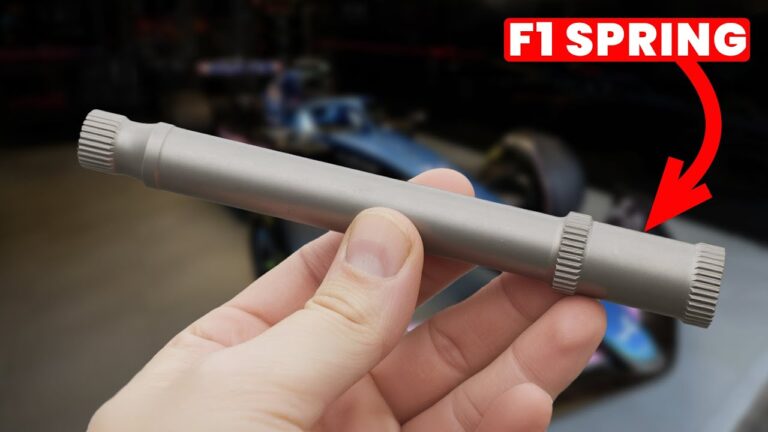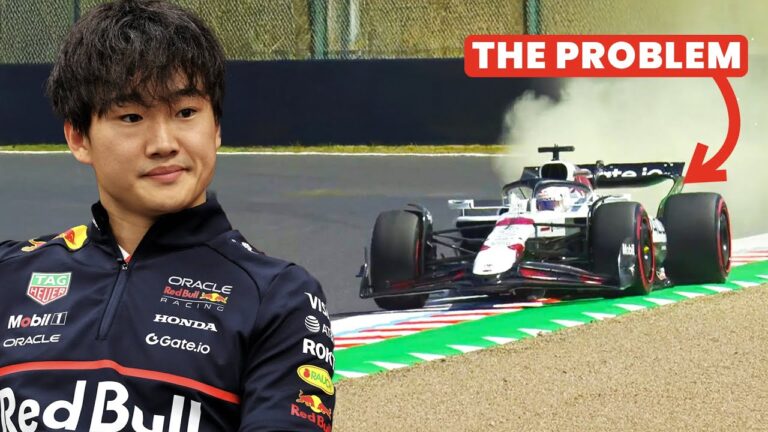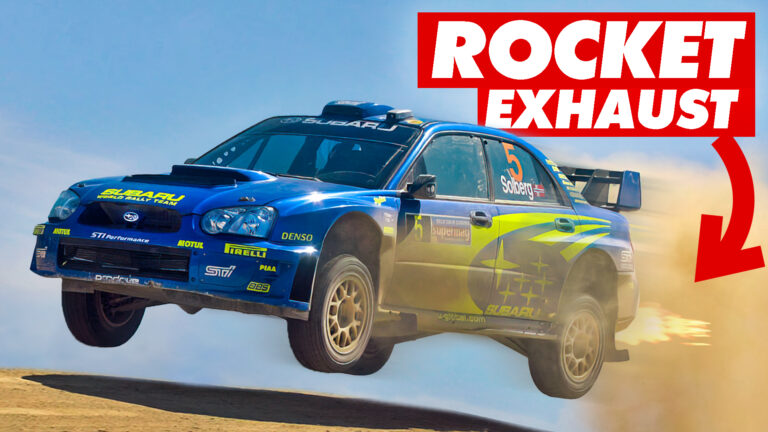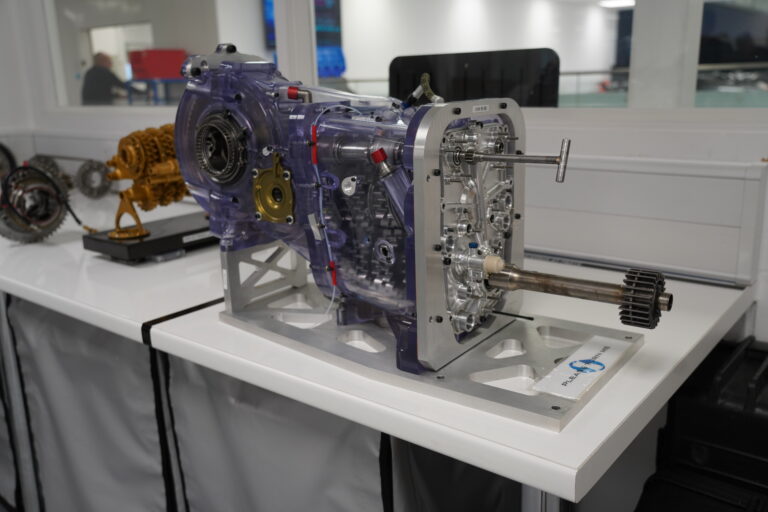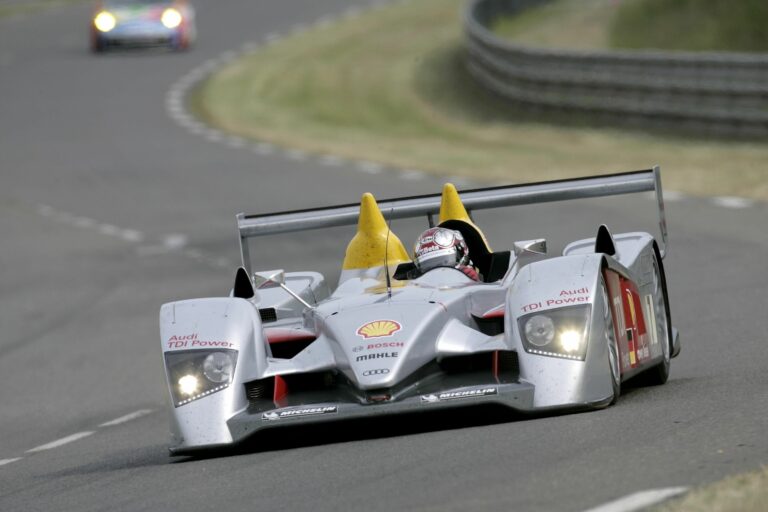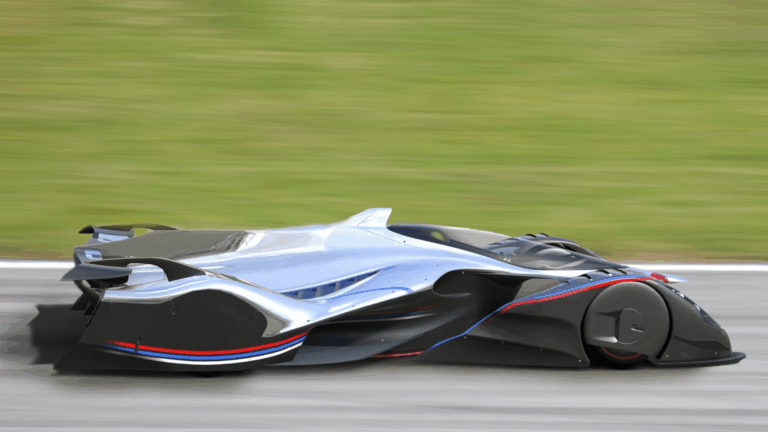
Ferrari has enjoyed a year of iconic victories, but few have captured attention like the win at Le Mans in 2023. This wasn’t another Formula 1 trophy—it was the 499P hypercar’s win in its debut season. With groundbreaking engineering choices, Ferrari triumphed in the hypercar category, a class contested by the likes of Toyota and Porsche. Let’s delve into how Ferrari’s engineering team built a race car that could go head-to-head with giants and secure a win at one of motorsport’s most demanding events.
Why Le Mans? A Strategic Pivot Beyond F1
Ferrari’s entry into the top class at Le Mans might seem unexpected, given their focus on F1. Yet, the World Endurance Championship (WEC) provided an enticing opportunity. Since the 2021 F1 cost cap limited Ferrari’s annual budget to $145 million, they’ve had room for other projects, leading them to the hypercar category in endurance racing. Not only did this allow Ferrari to showcase engineering prowess in a new arena, but it also offered a chance to test cutting-edge technology outside the constraints of F1’s cost cap.

Building the 499P: Design Choices and Engineering Innovations
With the decision to compete made, Ferrari set to work on the 499P, crafting the car from the ground up. The design began with the monocoque, or carbon-fibre tub—the core structure around which the car is built. Unlike Porsche, which outsourced its monocoque, Ferrari created their own, prioritising aerodynamics by making it as slim as possible.
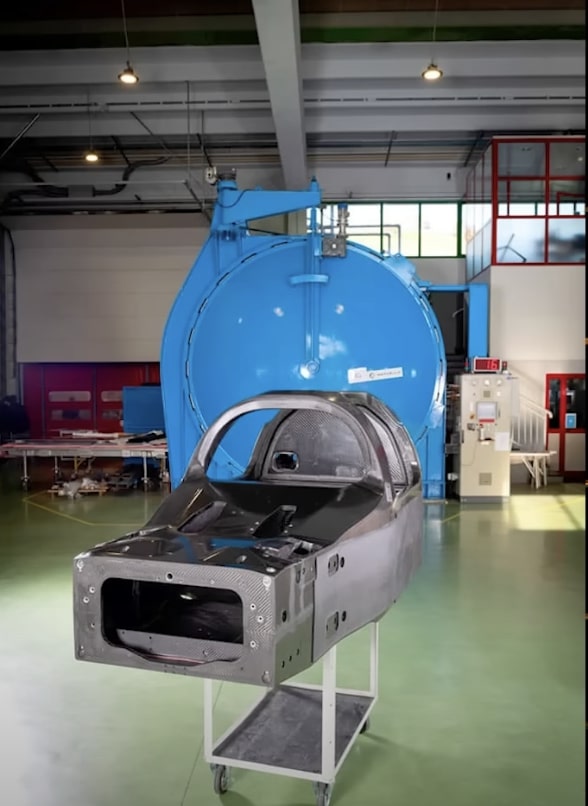
The V6 Engine: Power and Precision
Ferrari opted to base the 499P’s engine on the V6 from the 296 GTB and GTS road cars, with a 3.0-litre twin-turbocharged setup. This V6’s 120° V-angle allowed for a lower centre of gravity, crucial in endurance racing for stability and handling. The wide V-angle also helps with packaging efficiency and lowers vibration, creating an even, balanced power delivery that’s ideal for a hybrid setup.
Interestingly, regulations in the hypercar class limit the internal combustion engine to 500 kW (about 670 horsepower). Ferrari stayed within these limits, which allowed the team to focus on durability rather than maximising output, a strategic move considering the gruelling 24-hour race.
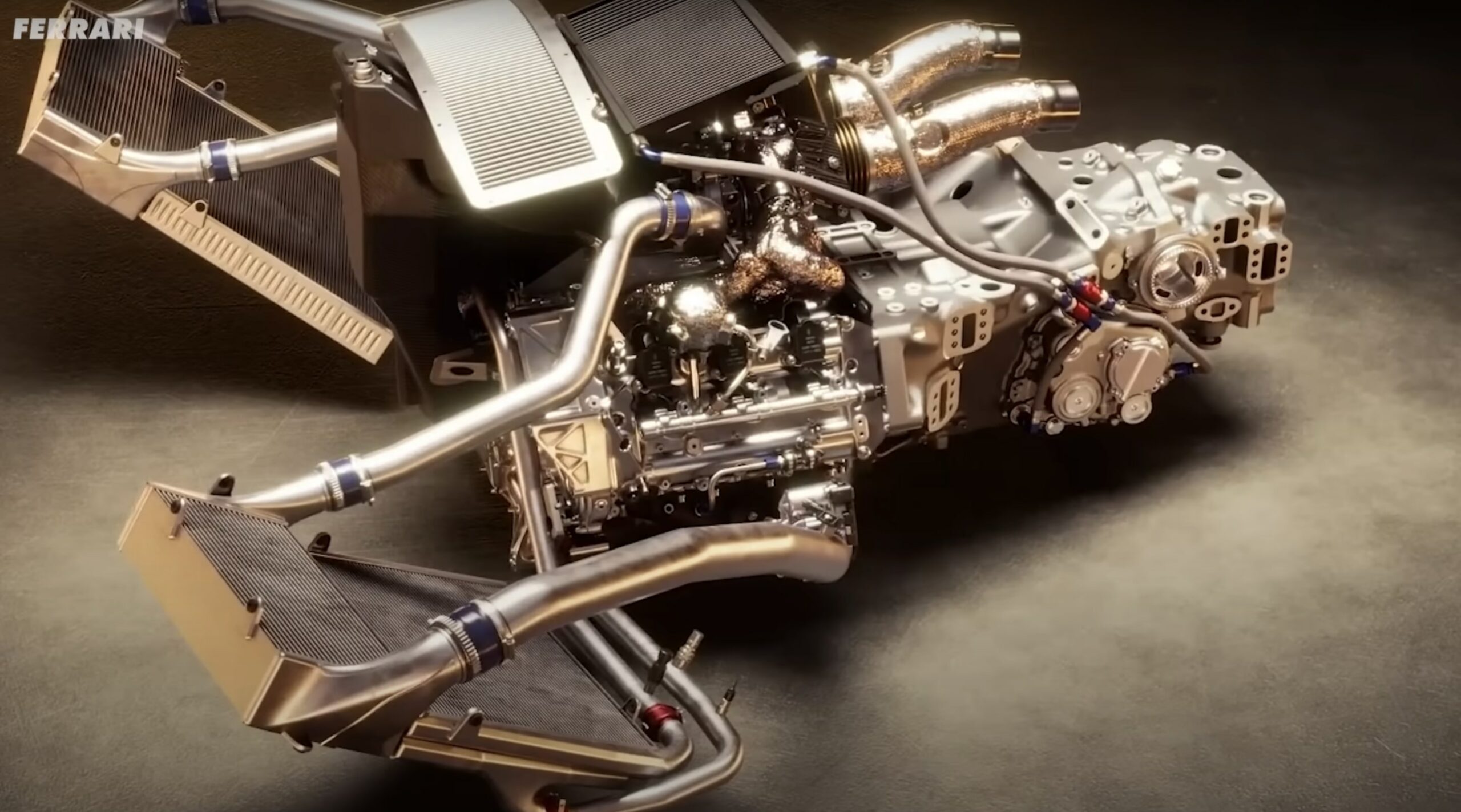
Hybrid Power: Advanced Battery and MGU-K System
Ferrari’s hybrid system is equally sophisticated. Built around a 900V battery with a Motor Generator Unit-Kinetic (MGU-K), it provides an additional 200 kW (around 270 horsepower) to the front wheels. The trickiest part? It can only deploy power above 190 km/h (120 mph). This rule levels the playing field, ensuring that the front-wheel drive doesn’t create an unfair advantage at lower speeds, especially over hypercar competitors from the IMSA series like the LMDh entries.
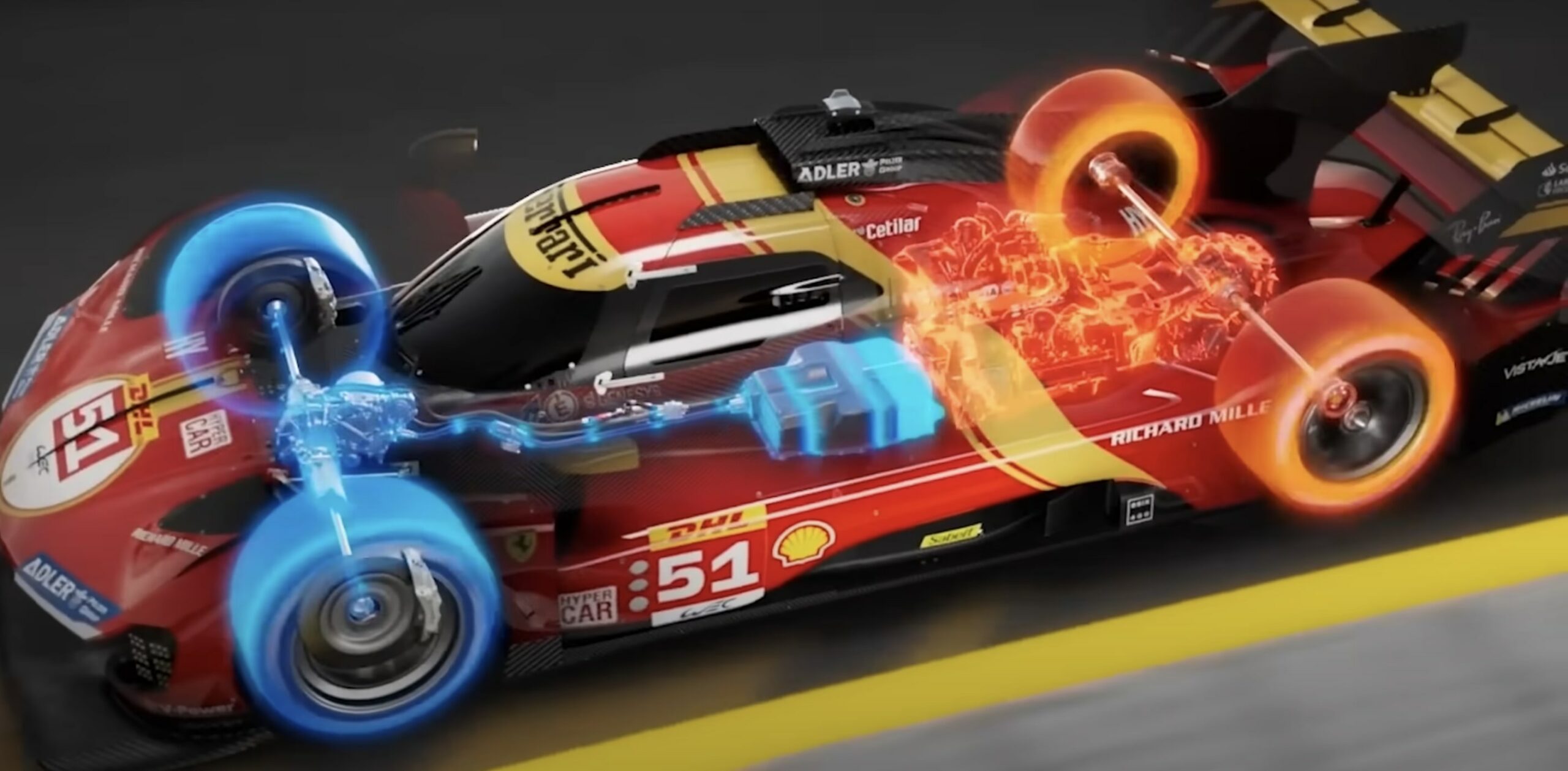
Aerodynamics: A Unique Approach to Downforce
Unlike Ferrari’s F1 cars, which must adhere to strict aerodynamic regulations, the 499P hypercar faced fewer geometric restrictions. Instead, the FIA enforces downforce and drag limits. Ferrari took advantage of this flexibility, adopting vertical strakes on the car’s bodywork—a distinct design choice. These strakes likely help maximise cornering downforce without violating straight-line aerodynamic efficiency rules. While this hasn’t been officially confirmed, it’s a plausible theory that Ferrari used to their advantage.

Balance of Performance: Leveling the Playing Field
One of the quirks of the WEC is the Balance of Performance (BoP) system. This adjusts car specifications to keep races competitive. Ferrari received a relatively favourable BoP for Le Mans, only adding 24 kg to their car’s weight compared to Toyota’s 36 kg. This minor difference can be pivotal over 24 hours, especially when reliability and consistency are crucial.
The Race: A Flawless Execution from AF Corse
Ferrari’s sports car success owes much to AF Corse, the experienced team running the 499P. Known for their meticulous racecraft, AF Corse made strategic tire and pit stop decisions that kept Ferrari competitive from start to finish. Despite starting on a less advantageous medium tire in light rain, Ferrari’s pit crew and drivers adapted swiftly, and the 499P’s reliability shone. While competitors faced issues, Ferrari’s only hiccup involved a quick power cycle reset—a minor inconvenience over 24 hours.
A Historic Win and a Glimpse into the Future
Ferrari’s win at Le Mans marked their first top-class victory in over 55 years. The 499P’s debut season success reflects not only exceptional engineering but a deeper strategic shift within Ferrari, exploring innovation beyond F1. With Le Mans now conquered, it’s clear Ferrari’s endurance program is as serious as their pursuit of F1 glory.
For fans and engineers alike, Ferrari’s journey with the 499P offers a fascinating look at how performance, reliability, and clever design choices come together in a race car. The 499P’s future in endurance racing looks bright, as Ferrari builds on a legacy of engineering excellence.




